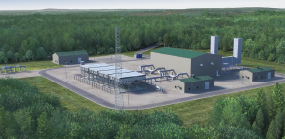The increased use of natural gas in homes and businesses (“direct use”) is a form of energy efficiency which will make an important contribution in assisting many states and the nation in attaining energy efficiency and carbon reduction targets. States should be encouraged to include increased direct use of natural gas as a least-cost option to meet carbon output reduction, energy efficiency, and Demand Side Management (DSM) objectives.
Considering full fuel cycle efficiency, the increased use of natural gas in buildings for space heating and water heating to displace electric resistance heating and water heating will:
· Reduce electricity demand, thus decreasing the need to build new electric power generation plants or transmission lines, and
· Reduce total carbon output compared to emissions associated with such generation.
Before rushing to an “all-electric” society, policy makers should consider the substantial comparative benefits of instituting incentives to increase the direct use of natural gas. Using cap-and-trade revenues, or other revenues, to provide incentives for original natural gas end-use applications and conversions to natural gas appliances from their electric counterparts will provide substantially higher and immediate return values in energy efficiency and carbon output reductions than an equal investment in electric applications.
A key benefit of direct use of natural gas is that it is available immediately. States can gain benefits today through policies encouraging use of existing high-efficiency natural gas appliances without waiting for uncertain or more costly lower carbon emitting electric generating technologies to develop. And, these immediate benefits will be further enhanced and sustained over time through R&D for new end-use natural gas technologies.
In the context of a carbon constrained market, the direct use of natural gas offers opportunity to:
(1) Optimize the nation’s use of existing energy sources; (2) Increase energy efficiencies; and,
(3) Reduce the nation’s carbon output with an immediately available option that has significant net societal cost savings.
A recent study examining the direct use of natural gas using the National Energy Modeling System (referenced as NEMS-DGU for purposes of the study) supports these conclusions. The findings of the study are summarized and discussed in the following text.
Findings:
1. Direct Use Of Natural Gas Decreases Energy Demand: Direct use of natural gas decreases total primary energy demand by up to 1.9 Quadrillion BTUs by 2030. Subsidies to electric appliances provide substantially less energy savings.
2. Direct Use Of Natural Gas Decreases Power Generation Needs: Increased direct use of natural gas will avoid the need to build up to 50 GW in power generation capacity by 2030. In comparison, the 50% subsidy to electric appliances case will require an additional 120 GW of power generation by 2030 – – a net differential of 170 GW.
3. Direct Use Of Natural Gas Reduces CO2 Emissions by 96 Million Metric Tonnes (MMT) per year: In 2030, the natural gas PR3 scenario results in a sustainable reduction of 96 MMT CO2 emissions per year. In contrast, the 50% subsidy to electric appliances scenario reduces CO2 emissions by only 12 MMT per year – – a differential of 84 MMT per year.
4. Direct Use Of Natural Gas Reduces Net Societal Costs: By 2030, the PR3 scenario saves consumers over $200 Billion. Coupled with avoided power plant construction savings of $110 billion, this results in a substantial net societal savings by instituting direct natural gas use incentives.



